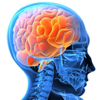Did you know some people see numbers as colours?
Someone with the condition known as grapheme-color synaesthesia might experience the number 2 in turquoise or the letter S in magenta. Now, researchers reporting their findings online in the Cell Press journal Current Biology on November 17 have shown that those individuals also show heightened activity in a brain region responsible for vision.
The findings provide a novel way of looking at synaesthesia as the product of regional hyperexcitability in the brain, the researchers say. They also provide a window into our understanding of individual differences in perception.
“Most of us tend to assume that we experience the world in the same way as everyone else, but synaesthesia provides a clear example of a group that perceives the world in a fundamentally different way,” says Devin Blair Terhune of the University of Oxford. “The majority of people do not have conscious experiences of colour when they look at numbers, letters, and words, whereas synaesthetes do. Studying these people can thus shed light on the brain mechanisms underlying conscious awareness.”
Earlier studies had shown that synaesthetes who experience colour for numbers and letters also discriminate among colours better than those with other types of synaesthesia. Those findings hinted that an overactive visual cortex might be in play.
Terhune’s team, which is led by Roi Cohen Kadosh, found that average people do indeed require three times greater magnetic stimulation to their visual cortex than synaesthetes do in order to experience phosphenes, transient flashes of light or other visual disturbances.
“We were surprised by the magnitude of the difference,” Terhune said. “The synaesthetes in our study displayed considerably greater levels of cortical excitability than our participants without synaesthesia. These results point to a very large effect that may reflect a fundamental difference between the brains of those with and without synaesthesia.”
It’s not that the enhanced excitability of the visual cortex is directly responsible for the experience of synaesthesia, however. Further experiments showed that reducing the excitability of visual cortex in synaesthetes actually increased their experience of colours with numbers. Meanwhile, increasing excitability in that brain region made the synaesthesia more intense.
Terhune says they now suspect that the enhanced excitability of synaesthetes’ brains might be related to the development of the condition, but it doesn’t produce the phenomenon in adults.
Ultimately, the findings might allow for treatments designed to reduce or eliminate the experience of synaesthesia or to make it even more vivid, he says. The work also raises new questions in other fields that examine atypical perceptions, such as hallucinations, he says. “Might it be that the same principle is applying also there?”
(Source: EurekAlert!: Current Biology)
More information
 | For more information on brain health, including the anatomy of the brain, the effects of nutrition and exercise on the brain, and the effect of mental activity on health, see Brain Health. |
Dates
Tags
Created by:

 Login
Login














